Introduction of grinding scale for flavor and taste description of small grain Huakui coffee beans in Humbela, Ethiopia
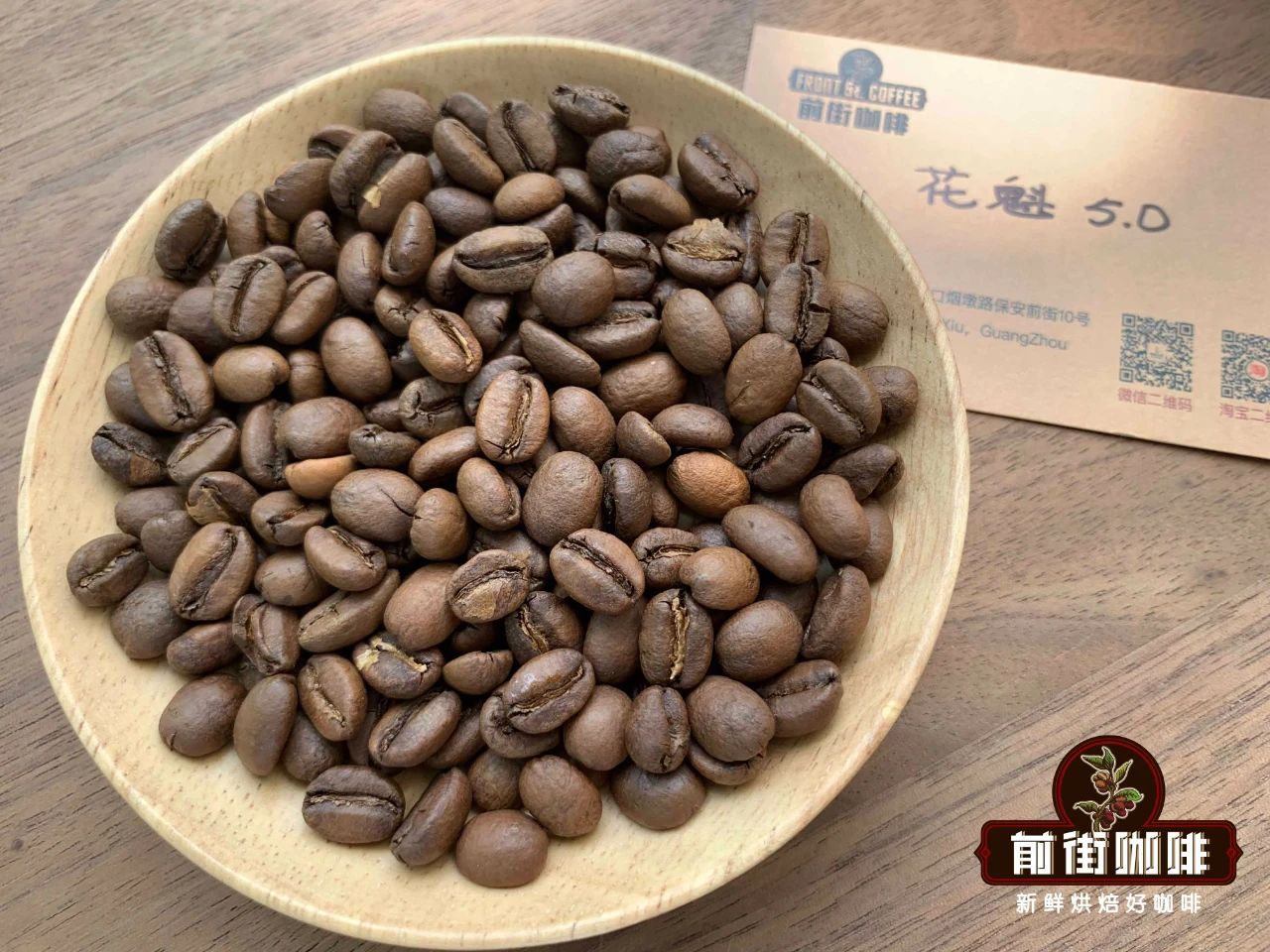
Coffee is Ethiopia's most important export cash crop and the main source of Ethiopia's foreign exchange earnings. Ethiopia's coffee exports account for about 3% of the world market, making it the eighth largest coffee exporter in the world. Coffee exports increased steadily from 58000 tons in 1990 to 110000 tons in 1995-1996 and remained at this level in the following years.
The export volume exceeded 110000 tons from 2001 to 2002 and reached 127000 tons from 2002 to 2003. As the price of coffee on the international market has been declining for a decade, Ethiopia's foreign exchange earnings have been seriously affected. Before the sharp drop in coffee prices, coffee exports accounted for more than half of Ethiopia's foreign exchange earnings, but now they account for only about 35 per cent. But according to the International Coffee Organization, coffee prices rebounded in 2002, rising from 41 cents per pound in September 2001 to 52 cents per pound in 2002 and 59.7 cents per pound in 2003. The average price in March 2004 was 60.8 cents per pound, an increase of 50% over September 2001. This is excellent news for Ethiopia.
Humbera is located in Ethiopia's largest coffee-producing area of Guji, and the administration is subordinate to the Oromia state. The west of Humbera is across the mountain from Yega Ficochel, and the north-east is connected with the shakiso,Uraga and Kerchaz producing areas of Guji respectively. It is the highest coffee producing area in Ethiopia, with humus-rich reddish brown soil, about 2300 meters above sea level, and a large temperature difference between day and night, which makes the coffee fruit grow slowly, pick all red fruits, use exquisite sun treatment, African scaffolding to air, limit the thickness of 2 to 3 layers, and change according to the color change after drying. On the 1st-3rd day of drying, manual selection was carried out twice a day, and 10% was selected each time. After turning every three hours, the coffee beans will be covered at noon and night to avoid rain and dew, accurately grasp the degree of fermentation, the whole process lasts as long as 21 days, creating a unique flavor of Sakuran.
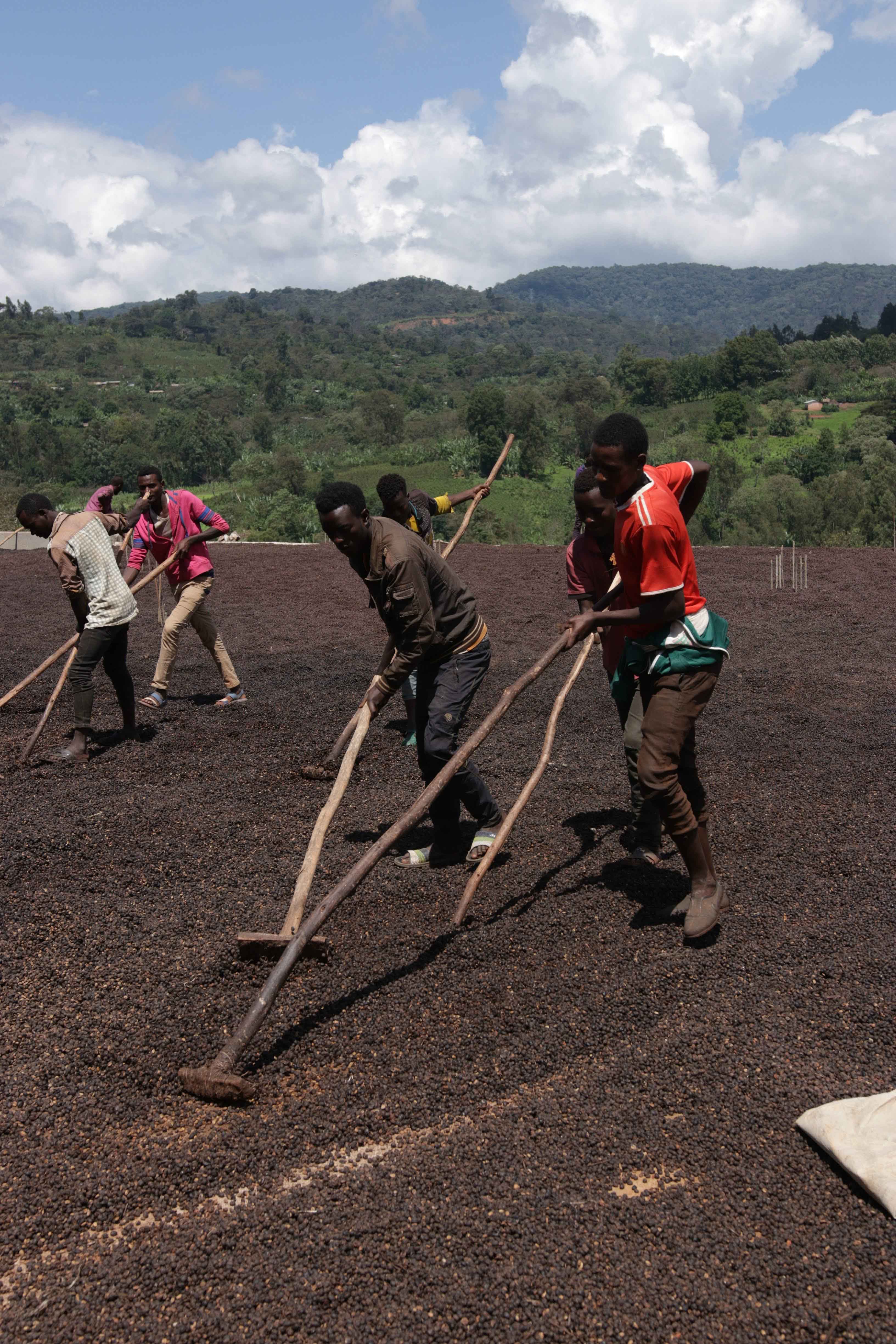
At present, there are about 20 processing plants of various sizes in Hambella producing areas. Hongshun, as a coffee raw bean company that has "taken root" in Ethiopia, has set up four sun treatment plants in Ethiopia in a cooperative manner in the GUJI Hambella region since 2016. There are four manor processing plants in the core production area of Hambella, namely, "Dire" church treatment plant, "mansa" mountain pond treatment plant, "Bobea" red flag treatment plant and "Goro baessa" mountain spring treatment plant. Goro baessa is a small village surrounded by mountains at an altitude of 2280 meters. December is its coffee harvest season. Every time, the mountains are covered with red and ripe coffee cherries, and the village is neatly arranged on African sunbeds.
As a well-known coffee bean in Humbera producing area, Huakui has attracted the attention of many people.
Let's go back to 2017, when a sun-dried coffee bean from DW's "Buku Aebl" processing plant won the champion of the TOH sunburn group, when Chinese raw bean merchants introduced the champion bean to China and named it "Sakuran". At this time this coffee bean has a strong strawberry and cream aroma. In addition, Li Jianfei from Beijing won the runner-up in the 2017 World Coffee Brewing Competition in China with this Sakui coffee (the other participating beans were rosy summer). This also adds a lot of fame to Huakui coffee beans. Note that at this time, Huakui Coffee Bean has the title of 2017 TOH champion bean.
Subsequently, DW increased to four processing plants in Humbera, namely "Buku Abel", "Buku Saysay", "Haro Soresa" and "Tirtiro Goye". Then it launched Sakui 2.0 in 2018, Sakuran 3.0 and 3.1 in 2019, Sakuran 4.0 in 2020, and Sakui 5.0 this year in 2021.
Therefore, it is not difficult to see that the naming of Sakui X.0 is based on the year, so when you see Sakui 3.0, you will know that it is the coffee beans of 2019 season, and when you see Sakui 4.0, you will know the coffee beans of 2020 season. In addition to the rule of year, Sakui coffee in 2017 is only sun-cured coffee beans processed by the "Buku Aebl" processing plant, while DW's processing plant is expanding and production is increasing year by year. Its flavor is also obviously different from that of Sakui in 2017. strictly speaking, only the sun-dried coffee beans treated by the "Buku Abel" processing plant can be called Sakui coffee beans.
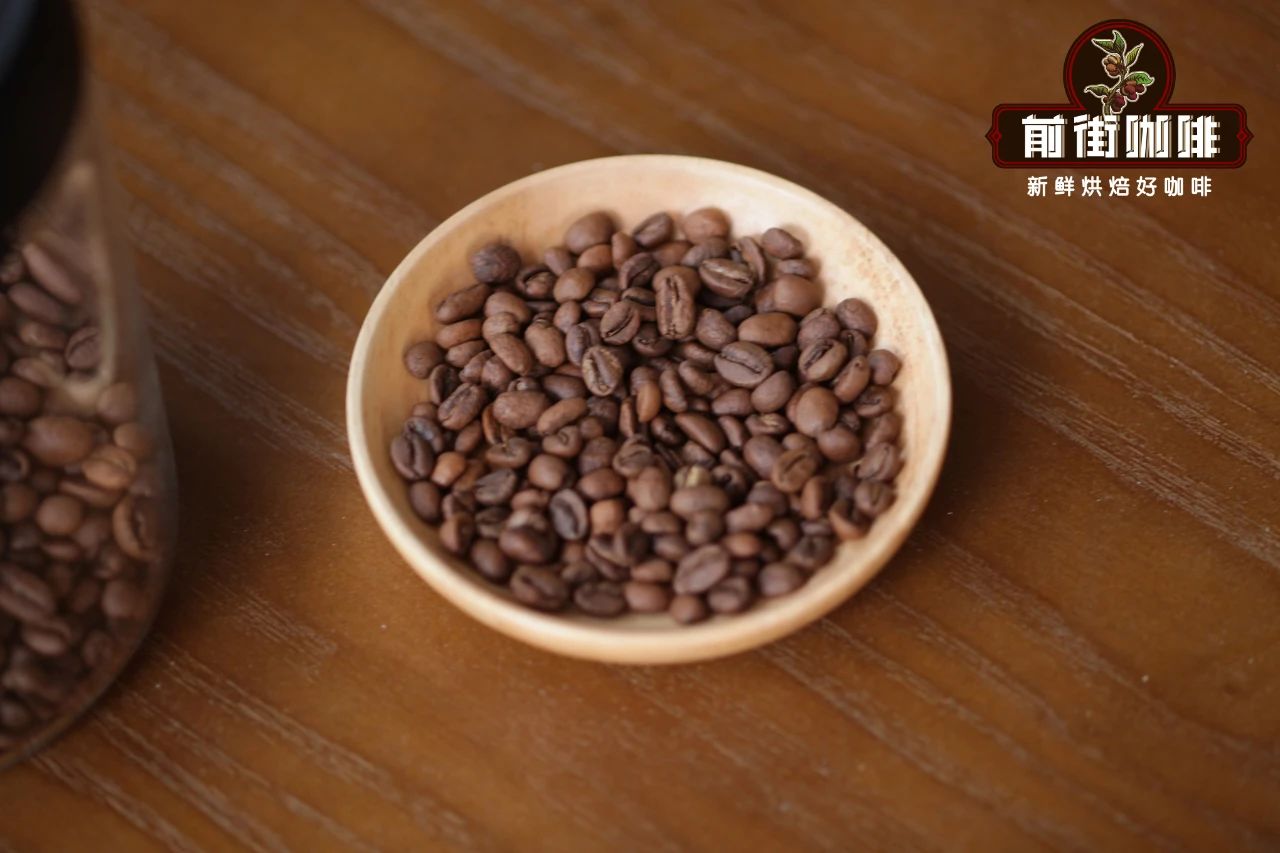
The flavor and aroma of Xiaogui are very familiar with those of Sakuran in 2017. At the beginning, Qianjie drank a flavor similar to that of 17-year-old Sakuran in 2018 and 2019, but not as thick as 17-year-old Sakuran. Qianjie found that the main source of the aroma of Sakui in 2017 is that there are some particularly small-grain varieties of Sakui coffee beans, and similar small-grain coffee was also found in Sakui in 2018 and 2019. Starting from 2020, the processing plant will deal with the small grain Sakuran independently again, so the small grain Sakuran does not belong to the [X.0] series. Since 2020, DW will separate the small grain varieties to form the small grain Sakuran coffee beans.
Comparison between Xiaogui and Huakui 5.0 coffee beans
First of all, the comparison of raw beans and cooked beans of Xiaogui and Huakui 5.0 was observed. both of them were coffee beans in the new season in 2021, and the granules of Xiaogui coffee beans were obviously smaller than those of Huakui 5.0. The proportion of small seed coffee beans was significantly higher than that of Huakui 5.0.
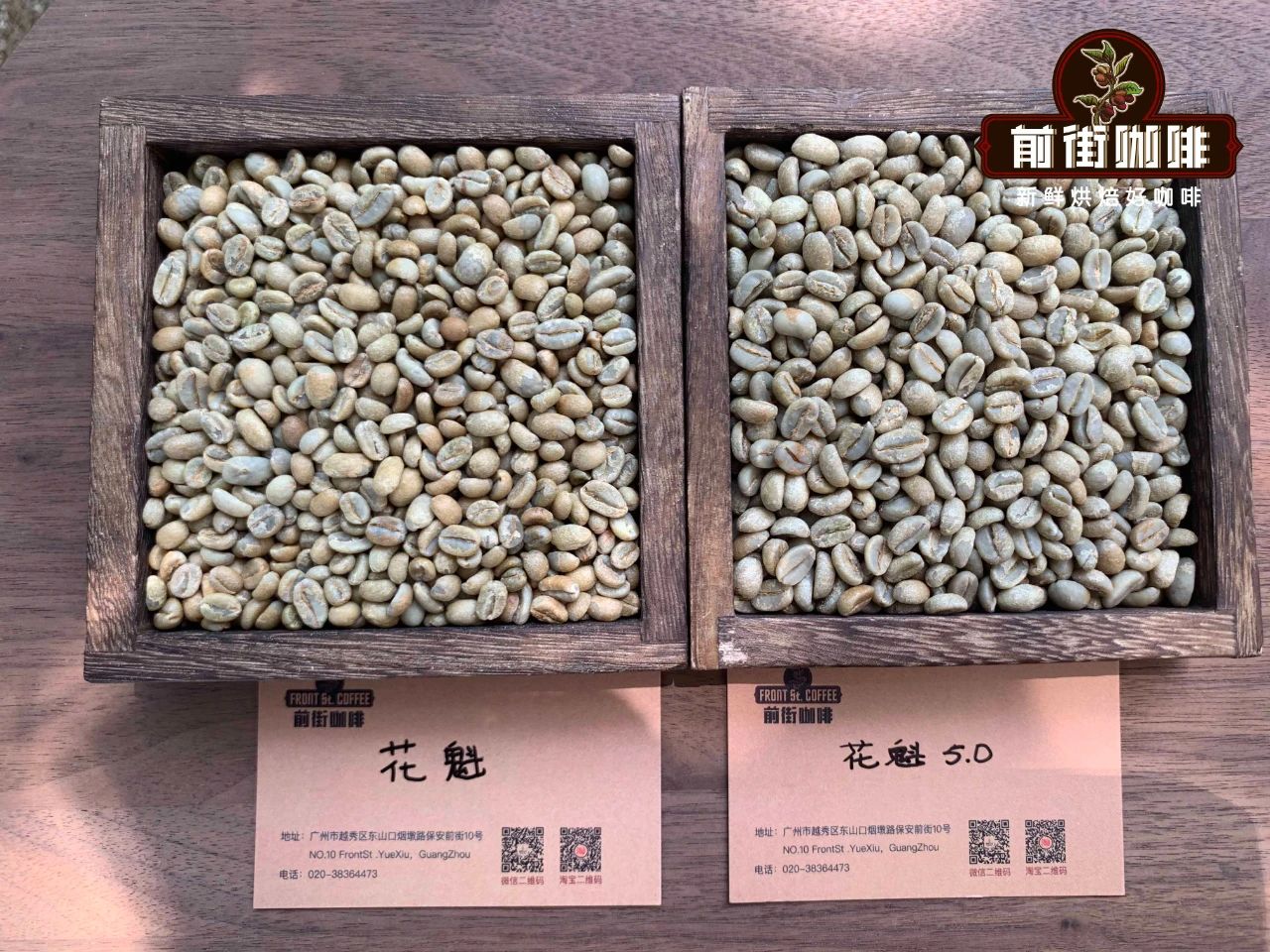
Qianjie roasted after getting Sakuran 5.0 and compared it with small-grained Sakuran coffee. Through the cup test, Qianjie found that the small Huakui coffee beans have deeper and stronger strawberry aromas and berry sweetness, while the 21-year-old Huakui 5.0 coffee is more active and brighter sour.
Xiaogui: creamy strawberries, citrus, passion fruit, fermented wine
Sakui 5.0: berries, oranges, honey, mangoes, flowers
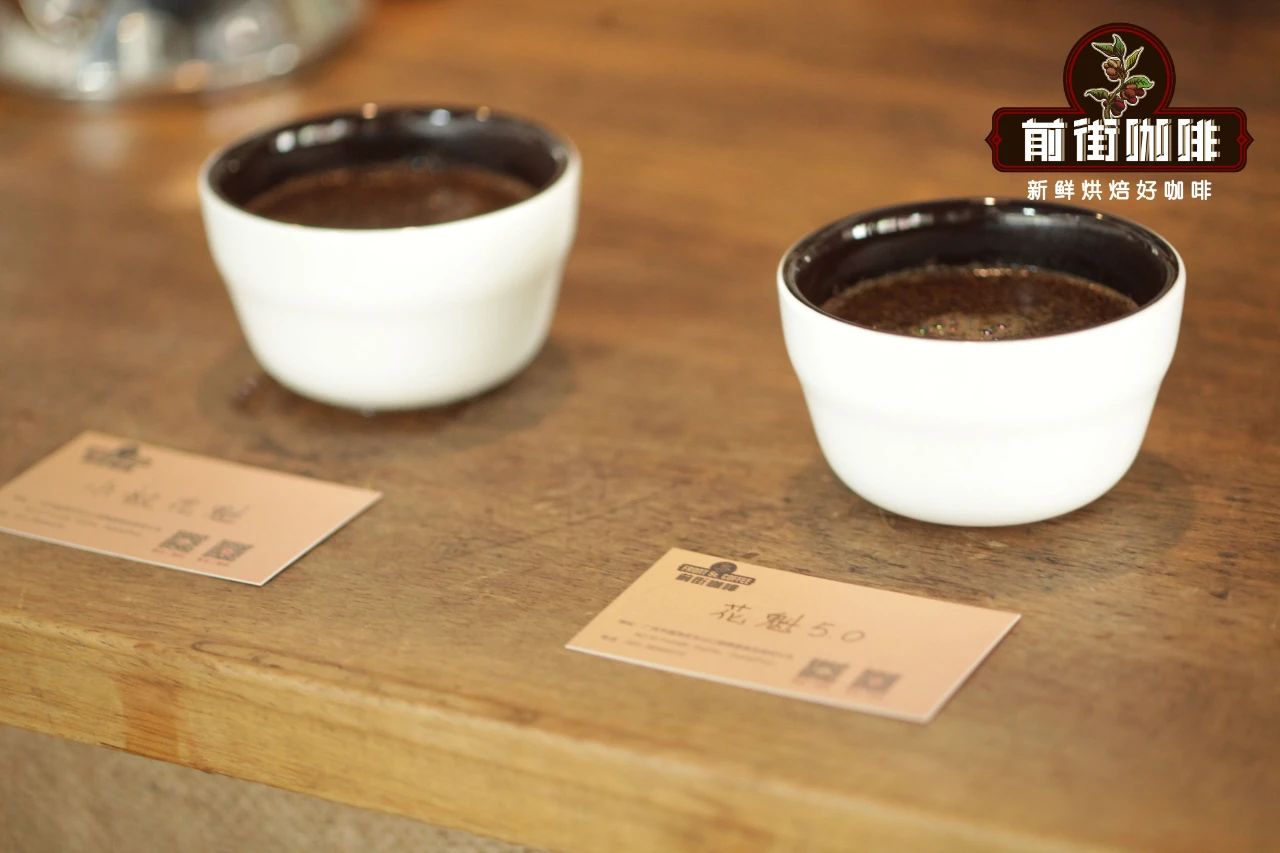
From the cup test, the flavor of Xiaogui is more similar to that of the 2017 coffee beans, while Sakui 5.0 prefers the flavor of Guji (sour berries, flowers, juice).
Then let's take a look at the flavor comparison of hand-made coffee beans. These two coffee beans both use the following brewing schemes:
Filter cup: V600001
Water temperature: 90-91 ℃
Powder content: 15g
Powder / water ratio: 1:15
Degree of grinding: medium and fine grinding (Chinese standard No. 20 screen pass rate 80%)
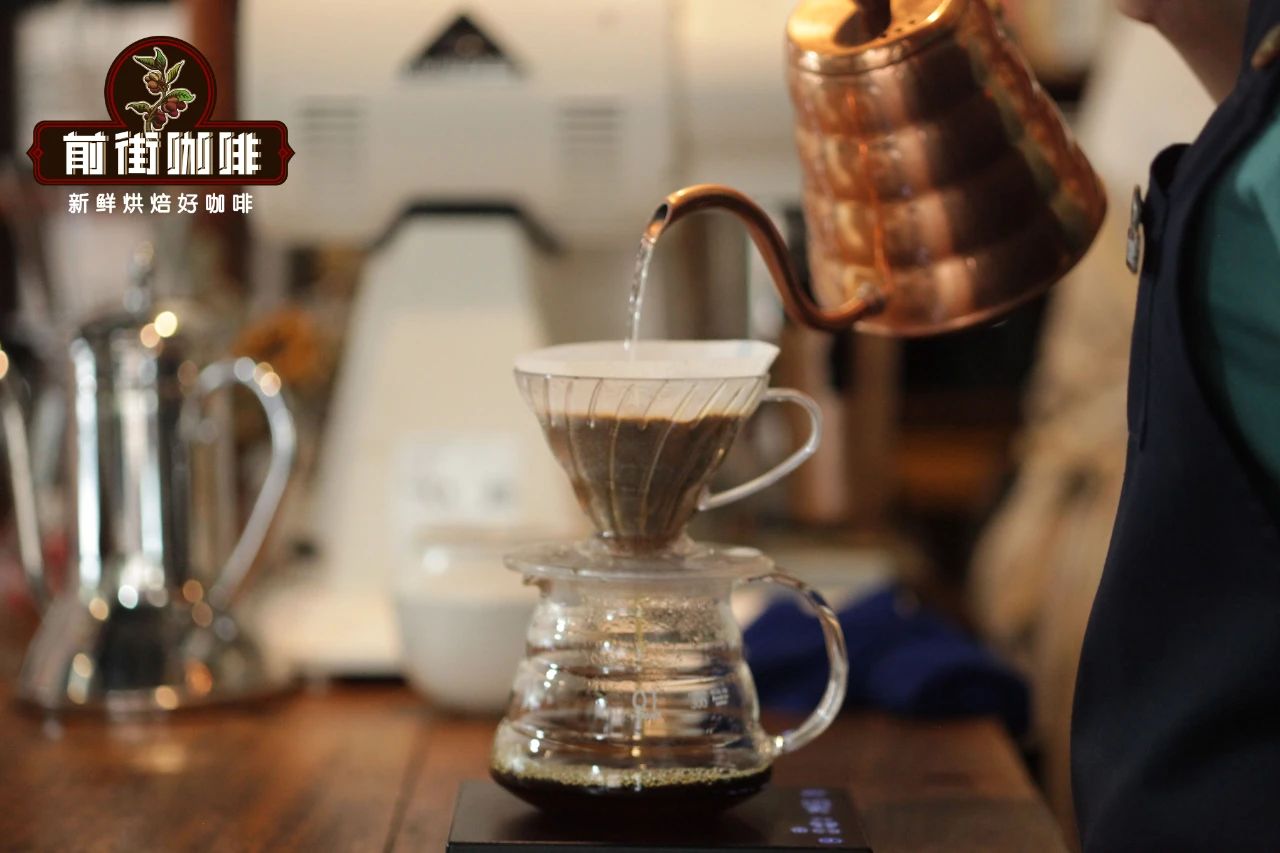
Cooking technique: three-stage extraction. Steam with 30 grams of water for 30 seconds, small water flow around the circle to 125 grams for sectional injection, water level drop is about to expose the powder bed, continue to inject water to 225 grams to stop injection, and so on when the water level drop is about to expose the powder bed, remove the filter cup, (steaming starts timing) the extraction time is 2 minutes 39 percent 00 ".
Flavor comparison
Small Sakuran: sweet aroma of berries, creamy strawberries, passion fruits, rich sweetness and full taste.
Sakui 5.0: the fragrance of flowers, the sour and sweet feelings of berries, citrus and plums, mango juice, honey and the sweetness of black tea.
For more boutique coffee beans, please add private Qianjie coffee on Wechat. WeChat account: kaixinguoguo0925
Important Notice :
前街咖啡 FrontStreet Coffee has moved to new addredd:
FrontStreet Coffee Address: 315,Donghua East Road,GuangZhou
Tel:020 38364473
- Prev
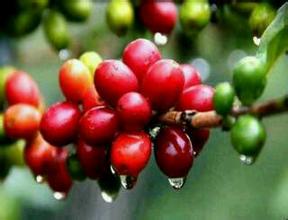
Flavor description of Panamanian Geisha Rosa Coffee beans introduction to the Regional treatment of Grinding scale production
Flavor description of Panamanian Geisha Rosa Coffee beans Gesha as one of 77 natural villages south of Ethiopia, like other natural villages, the indigenous people here live a life of sunrise and sunset. Rose Xia was born in a barren valley and lived a natural and mundane life. But she inherited the oranges unique to Essex coffee.
- Next
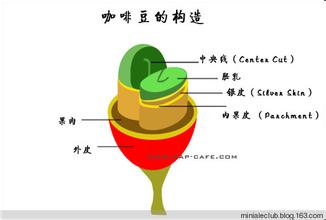
Lin Dong Manning Coffee Flavor description Grinding scale Variety production area Taste treatment method
Lin Dong Manning Coffee Flavor description Grinding scale production area Taste treatment method introduces that Mantenin coffee beans have large particles and hard beans, and are prone to defects in the process of planting, and are usually subject to strict manual selection after harvest. If the control process is not strict enough, it is easy to cause the quality of the good and the bad to be intermingled, and the different degree of baking will also directly affect the taste, so it has become more controversial.
Related
- Detailed explanation of Jadeite planting Land in Panamanian Jadeite Manor introduction to the grading system of Jadeite competitive bidding, Red bid, Green bid and Rose Summer
- Story of Coffee planting in Brenka region of Costa Rica Stonehenge Manor anaerobic heavy honey treatment of flavor mouth
- What's on the barrel of Blue Mountain Coffee beans?
- Can American coffee also pull flowers? How to use hot American style to pull out a good-looking pattern?
- Can you make a cold extract with coffee beans? What is the right proportion for cold-extracted coffee formula?
- Indonesian PWN Gold Mandrine Coffee Origin Features Flavor How to Chong? Mandolin coffee is American.
- A brief introduction to the flavor characteristics of Brazilian yellow bourbon coffee beans
- What is the effect of different water quality on the flavor of cold-extracted coffee? What kind of water is best for brewing coffee?
- Why do you think of Rose Summer whenever you mention Panamanian coffee?
- Introduction to the characteristics of authentic blue mountain coffee bean producing areas? What is the CIB Coffee Authority in Jamaica?

